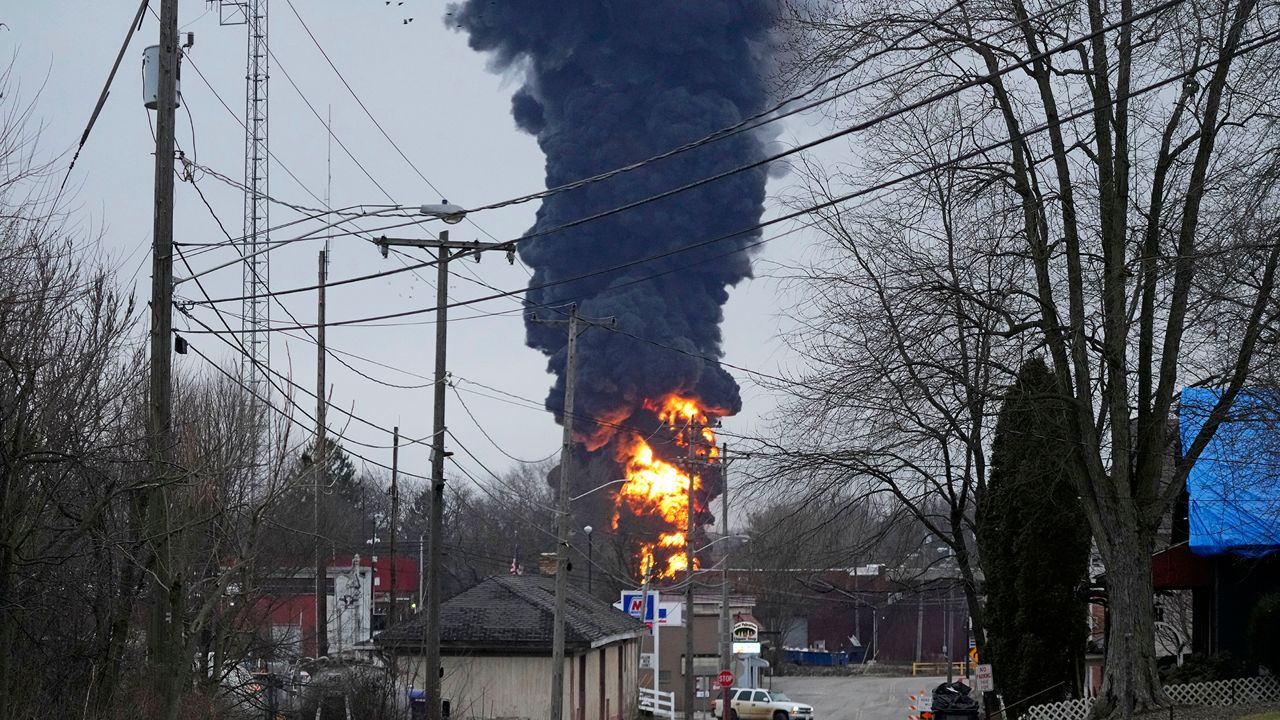Equipment that failed before a freight train hauling toxic chemicals derailed in eastern Ohio is the focus Friday on the second day of a rare federal hearing in the small town closest to the accident.
The National Transportation Safety Board said in its preliminary report that an overheating wheel bearing likely caused the Feb. 3 Norfolk Southern derailment that sent a plume of toxic black smoke into the sky. Several tank cars were damaged in the crash, and officials decided that five of them containing vinyl chloride needed to be blown open to release the chemical and prevent an explosion.
Roughly half the 5,000 residents of nearby East Palestine had to evacuate their homes as a result. State and federal officials have said the air and water around town is safe, but residents continue to worry about the long-term health effects from the derailment.
On Thursday, first responders and others testified about the difficulties they encountered in identifying the train’s cargo and reviewed why officials decided to release and burn the toxic chemicals. On Friday, residents, local officials and others are hearing testimony about the wheel bearings, trackside detectors and tank cars.
The NTSB will determine the cause of the derailment but that report is not expected until at least a year after the derailment.
Mike Rush with the Association of American Railroads trade group testified Friday morning that railroads have eliminated most derailments involving overheating bearings by using trackside detectors designed to spot them before they can cause a crash, but that the system is not failsafe, as illustrated by the derailment in Ohio this year.
The NTSB has said that the overheating bearing triggered an alarm, but that the crew didn’t have a chance to stop the train before the derailment.
Rush said nearly every hazardous materials shipment that railroads haul arrives safely, but even one derailment involving those chemicals can be disastrous.
“The Feb. 3 derailment is a stark reminder of the railroad industry’s responsibility to the communities in which we operate. The railroads are taking what happened here with the utmost seriousness,” Rush said.
Jason Cox with the Transportation Communications Union testified that the railcar that caused the derailment wasn’t inspected by Norfolk Southern even though it passed through three railyards where qualified inspectors were working. Cox said a detailed inspection by a carmen might have caught the problem and prevented the derailment.
But Rush said a visual inspection won’t typically find a damaged bearing because they are sealed inside the railcar’s axle. The industry relies on trackside detectors to spot overheating bearings.
Norfolk Southern and all the major freight railroads have announced plan to add more trackside detectors and review what temperature should set off an alarm. But federal regulators and Congress have called on the industry to do more.
The Environmental Protection Agency and Ohio officials continue to oversee the cleanup of contaminated soil and water.



